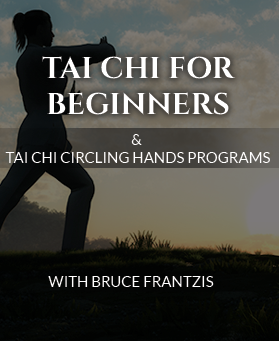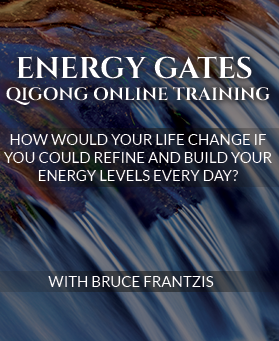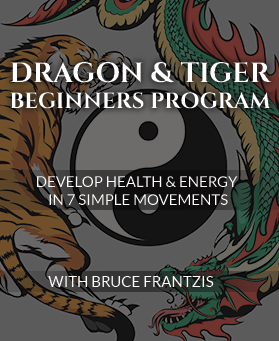When I studied with the late Hung I Hsiang, he was in his fifties. He spoke with a gravelly voice that sometimes conveyed a bit of gruffness, but in actuality, Hung was an intelligent, perceptive, well educated and articulate man. Watching him practice bagua zhang, his small-movement precision was incredible. The potential for misreading Hung based on interpretation of voice tone raises an important point about bagua practitioners. I have met many over the years who practice bagua for all sorts of animal, human and spiritual reasons. Some have been saints, some sinners. The one thing in common about them was that they all tend have exceptional innate intelligence—regardless of whether they had a formal education or not.
Hung had been in a lot of fights. In Taiwan, it was very easy to find a fight if you were so inclined. In the early and middle part of this century, all over the world men used to fight for the sheer joy of it. Such fights often took place in designated social places, such as bars. In Taipei, fights usually occurred near areas of prostitution. Very commonly, people were drinking in an underworld atmosphere and probably more often than not there were no hard feelings after a fight. Reputations were built and rumors were
spread about the techniques used.
Those who challenged Hung suffered the consequences. He was a ferocious fighter who had the skill and the hard character that made many challengers regret their folly. Hung was physically loose and flexible, and was very good at teaching minute martial arts movements and the technical skills of fighting.
Hung’s Rou Shou was superb.
Hung had an amazing ability to move. I had never before seen a person of his size undulate his body and move as if he had no bones. He developed the Dragon Body to the greatest extent possible. He could make his body twist, turn and fold in ways that had to be seen to be believed.
Hung’s hands were incredibly sensitive. He could feel minute shifts of a person’s energy and counterattack instantaneously. It was as if his hands had eyes. Hung’s specialty was in the use of very tiny fighting angles based on the triangle, square and octagon. Whereas most sophisticated martial artists using angles usually require inches or feet to apply them. Hung, however, could apply these angles in less than a fraction of an inch of space. He loved analyzing the use of small circles and angles of attack. He was a truly creative martial artist who explored and extrapolated his
knowledge.
After three or four hours of class, Hung and his more committed students would drink tea, eat watermelon seeds and talk about bagua and fighting angles at open-air tables set up on the sidewalk near our practice hall. Hung’s understanding and use of small circles and angles of attack made sparring with him fascinating, bewildering, terrifying and a pure joy. Hung was an excellent teacher of technical fighting applications. He always told me “I cannot teach you how to develop chi, but I can teach you how to use it.”
Hung always emphasized separating the different qualities of the martial arts. All too often people who study different martial arts do them all with the same quality of internal movement and chi. Hung would constantly reinforce the thought that bagua, tai chi and hsing-i were very different. When I was initially with Hung during 1974 and 1975, this thought of difference in the internal arts was very difficult for me to grasp.
Internal to me at the intermediate stage of learning bagua and hsing-i meant soft, yet Hung’s power was harder and stronger than any karate or Shaolin I had ever experienced. He was soft and yet not as soft as tai chi masters I had known. However, Hung was just as sensitive and able to react effectively in an instant just as mysteriously as the best tai chi practitioners I had studied with including Yang Shou Jung (Yang Cheng Fu’s eldest son). Hung’s bagua and hsing-i were clearly better than his tai chi.
The tai chi style practiced by Wang Shu Jin and Hung I Hsiang was a tai chi/hsing-i/bagua combination style developed by Chen Pan Ling, which also combined the essential elements of the Yang, Wu and Chen styles of tai chi chuan. This was further complicated by the fact that the hsing-i taught by Hung was a Hebei combination style with hsing-i movements, but Bagua Dragon Body motions and spiraling handwork.
The internal quality of Hung’s bagua was only minutely different from his hsing-i, although it was much more undulating. All of this derived from the fact that his bagua and hsing-i were fused together. Separating the nature of the internal movements from each other was most difficult. Even more so was clearly separating the different types of chi involved. This was very confusing, as Hung was constantly emphasizing that we had to clearly separate Shaolin and each of the three different internal martial arts.
They were to be done clearly and separately, so that the unique qualities of each could be distinctly differentiated. It was only later, first through Bai Hua and later Liu Hung Chieh, that I was to clearly attain this ability to separate the different types of chi. Although Hung expended much effort to teach me, it was beyond my reach in those early days.
In the 1970s, Hung I Hsiang had about a dozen exceptionally talented students. Many of them dominated the full-contact tournaments in Taiwan. One student, Weng Hsien Ming, won the Taiwan full-contact championships three times in a row when he was in his teens.
He then went into the army and didn’t practice at all for over three years. After returning to civilian life, he was able to train for only a few weeks and still capture second place. Another of Hung’s students, Huang Hsi I, also usually won his all-Taiwan full contact tournaments with knockouts. Huang subsequently became one of the best qigong (chi gung/chi kung) tui na doctors in Taiwan. The youngest student was Lo Te Hsiu, known for his heel kick to the solar plexus. Over time, Lo researched and became highly skilled at Hung’s complete post-birth bagua system.
Hung I Hsiang’s emphasis was not so much on maximizing internal power and chi development. Instead, he focused on the subtleties of how to effectively deliver the power one had and how to rapidly and smoothly change from one technique to another. He did this by demonstrating how to make tiny circles deep within every crevice of the body and change internal body alignments with great speed.
He spent a lot of time showing how tiny shifts in body weight could create unusual power vectors. He also made students feel this power not only in terms of strikes, but also by showing how changes in subtle body movements could achieve desired defense/attack application outcomes. He taught his students how to instantaneously release themselves from bad internal alignments that could normally paralyze the body, and resume their attack, much like you smoothly change gears in a stick shift car. Hung’s emphasis was on how small changes of body movement or chi flow could produce superior practical fighting techniques and overall athletic capacity.
Note: I also practiced and researched the Chen Pan Ling tai chi chuan form, which is composed of nine distinct levels of achievement. This research began in Tokyo in 1968 with Wang Shu Jin’s student Chang I Chung and continued through 1987 with Wang, Hung I Hsiang and Huang Hsi I, and with other students of Chen Pan Ling in Taichung, Taiwan, as well as with teachers in Mainland China.
To complete this research and comprehend the roots of this style required an in-depth study of the Chen Village form of tai chi, which I conducted with Feng Zhi Qiang in Beijing, the Wu style of tai chi with Liu Hung Chieh and the Yang style with T. T. Liang, Yang Shou Jung, Bai Hua and Lin Du Ying.




0 Comments